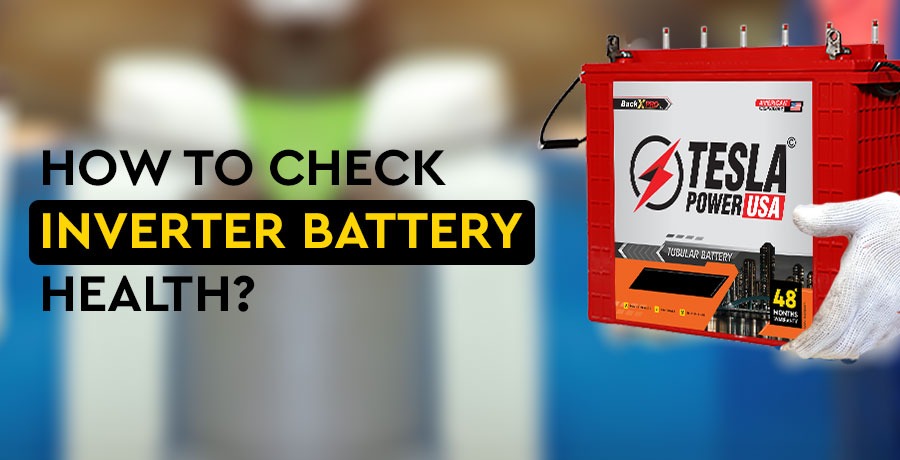Inverters are a valuable investment, providing backup power during blackouts and ensuring uninterrupted electricity supply. However, the performance of an inverter largely depends on the health of its battery. Regularly checking the inverter battery's health is essential to ensure its efficiency and longevity. In this blog, we will outline a step-by-step guide on how to check inverter battery health effectively.
Step 1: Visual Inspection
Begin by conducting a visual inspection of the battery. Look for any physical damage, leaks, or corrosion on the terminals. Damaged or corroded terminals can hinder the flow of electricity and affect the inverter battery's performance. If you notice any visible issues, it's best to address them promptly or seek professional help.
Step 2: Battery Voltage Check
The next step involves measuring the battery voltage using a digital multimeter. Ensure that the inverter and all connected loads are turned off during this process to get accurate readings. Connect the multimeter's positive (red) probe to the positive terminal of the battery and the negative (black) probe to the negative terminal. A fully charged 12V battery should read around 12.6 to 12.8 volts. If the voltage is significantly lower, it might indicate a weak battery or a need for recharging.
Step 3: Load Test
Perform a load test to evaluate the battery's capacity to deliver power under load conditions. To do this, switch on the inverter and connect a moderate load, such as a light bulb or a fan, to it. Monitor the battery voltage during the load test. If the voltage drops rapidly or the inverter shuts down under load, it suggests that the battery is weak and might need replacement.
Step 4: Electrolyte Check (For Flooded Lead-Acid Batteries)
For flooded lead-acid batteries, it is essential to check the electrolyte levels. Carefully remove the vent caps and inspect the liquid level inside. The electrolyte should cover the battery plates adequately. If the levels are low, add distilled water to bring it up to the required level. Remember never to add acid to the battery.
Step 5: Battery Health Analyzer (Optional)
Consider investing in a battery health analyzer if you want a more comprehensive assessment of your inverter battery's condition. These devices can measure battery capacity, internal resistance, and overall health accurately. Battery health analyzers are simple to use and can provide valuable insights into whether your battery requires maintenance or replacement.
Checking the inverter battery health regularly is crucial for ensuring an uninterrupted power supply and maximising the lifespan of your inverter system. Through simple steps like visual inspection, voltage checks, load testing, and electrolyte monitoring (for flooded batteries), you can gauge the health of your battery and take appropriate actions if necessary.
Remember to follow safety precautions while handling batteries and seek professional assistance if you encounter any issues beyond your expertise. A well-maintained and healthy inverter battery will keep your appliances powered during power outages, giving you peace of mind and comfort when you need it most.






